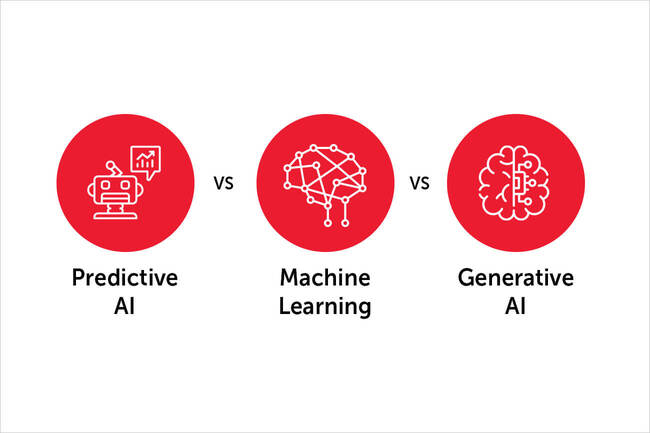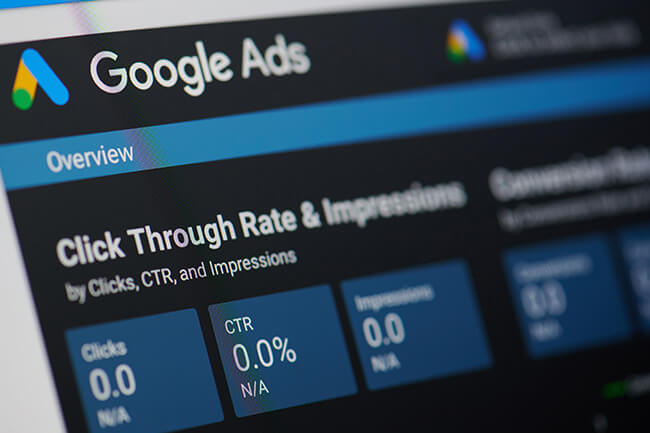AI is like the big umbrella concept. It’s about making machines act smart, almost like humans. Within AI, there’s a part called ML. ML helps machines learn from data on their own.
But what is AI exactly?
AI is a mix of different technologies working together to make machines smart in various ways. Its why people have different definitions of AI; it’s not just one thing.
Machine learning and natural language processing are key parts of AI. When combined with data and automation, they help businesses improve customer service and make supply chains work better, among other advantages.
However…
AI and ML are becoming increasingly popular, yet their growth is hindered by a shortage of individuals possessing the necessary expertise. According to Statista, 82% of companies seek professionals skilled in machine learning, but only 12% have an adequate number of these proficient individuals. In response, digital marketing services have already begun capitalizing on this cutting-edge technology.
Understanding Machine Learning
In this section, we’ll uncover the basics and real-life uses of this fascinating technology.
What Is Machine Learning and How Does It Work?
Machine Learning is a smart computer technology. It learns from information and makes decisions. It’s like teaching a computer to do something by showing it lots of examples.
Types Of Machine Learning
Machine learning can be divided into three main types:
- Supervised Learning: Here, the computer learns from labeled data, like a teacher guiding a student. It predicts outcomes based on known examples.
- Unsupervised Learning: In this type, the computer figures things out on its own without labels. It detects patterns and similarities in data.
- Reinforcement Learning: This is like training a pet. The computer learns by taking actions and receiving rewards or penalties. Over time, it gets better at making decisions.
Applications Of Machine Learning
Machine Learning finds applications in numerous areas, making our lives easier and more efficient. Some common uses include:
- Recommendation Systems: You’ve probably seen this on platforms like Netflix and Amazon. ML algorithms analyze your past choices and suggest movies, products, or content that you might like.
- Fraud Detection: Banks and credit card companies use ML to spot unusual transactions. If they detect something unusual, like an unexpected purchase in a foreign country, they can mark it as a possible fraud.
- Speech Recognition: Virtual assistants such as Siri or Google Assistant use Machine Learning to grasp and answer your spoken requests. This technology has made voice-controlled devices a reality.
- Image Recognition: ML can identify objects and patterns in images and videos. This is handy for everything from medical image analysis to self-driving cars, which use it to “see” the road.
- Natural Language Processing (NLP): ML helps computers understand and generate human language. It powers chatbots, language translation services, and even grammar checkers.
- Healthcare Diagnostics: ML can analyze medical data to help doctors diagnose diseases more accurately. It can also predict patient outcomes and even recommend treatment plans.
- Stock Market Predictions: Investors use ML to analyze stock market data and make predictions about future trends. It can process vast amounts of data quickly, helping traders make informed decisions.
- Customer Support Chatbots: Many companies use ML-powered chatbots to provide instant responses to customer queries. These bots can handle routine questions, freeing up human agents for more complex issues.
Understanding Generative AI
Welcome to the world of Generative AI, where computers create things, like art and music, all on their own.
What Is Generative AI And How Does It Work?
Generative AI is a type of technology that creates things like images, text, or even music by learning from a lot of examples. It’s like a smart artist that can make new things based on what it has seen before.
Applications Of Generative AI
Generative AI showcases its versatility through a range of real-world applications. This technology is harnessed to produce a wide array of creative outputs, such as generating unique art pieces, crafting coherent blocks of text, and even constructing lifelike images that appear as if captured by a camera.
Its ability to create new and diverse content has found its way into fields like art, literature, and visual design, enriching these domains with innovative and computer-generated contributions.
Understanding Predictive AI
Let’s dive into Predictive AI, a technology that forecasts future outcomes based on data and patterns.
What Is Predictive AI And How Does It Work?
Predictive AI is like a smart fortune-teller for computers. It uses data and patterns to make educated guesses about what might happen in the future.
Applications Of Predictive AI
Predictive AI is a flexible technology that’s incredibly important in many parts of our lives. Think of it as a digital crystal ball for data. Let’s look at some simple examples of how it improves our world:
- Weather Forecasting: Predictive AI looks at data from weather stations, satellites, and past weather to forecast upcoming weather. This helps us plan our day, like deciding if we should bring an umbrella or wear sunscreen.
- Customer Preferences: When you shop online, have you noticed that websites suggest products you might like? That’s Predictive AI at work. It examines your past purchases and browsing history to recommend items you’re likely to be interested in.
- Healthcare: In healthcare, Predictive AI can analyze patient data to identify potential health issues. For instance, it can predict the risk of developing a disease based on a person’s lifestyle and genetic factors, allowing for early intervention and prevention.
- Maintenance: Industries like aviation and manufacturing use Predictive AI to anticipate when machines or equipment might break down. By predicting maintenance needs, they can avoid costly downtime and ensure safety.
Distinguishing Between Generative AI, Predictive AI, and Machine Learning
Let’s distinguish between Generative AI, Predictive AI, and Machine Learning in simple terms:
- Machine Learning (ML): Think of ML as a smart learner. It’s all about training computers to recognize patterns in data. For example, it can learn to identify spam emails or predict house prices based on historical data.
- Predictive AI: Imagine Predictive AI as a digital fortune-teller. It studies data to make clever guesses about what might occur later on. For example, it can forecast things like the weather, stock prices, or health concerns by looking at past trends and current facts.
- Generative AI: Generative AI is like a creative artist. It doesn’t predict; instead, it creates new things. Think of it as a tool for generating art, music, or even realistic text that didn’t exist before.
In a nutshell, Machine Learning learns from data, Predictive AI forecasts future events, and Generative AI creates new content. Each serves a unique purpose in the world of artificial intelligence.
How Will the Adoption of AI and ML Transform Your Business?
The adoption of AI and ML can transform your business by making it smarter and more efficient. It can help you:
- Save Time: AI can do tasks faster, like sorting through emails or paperwork.
- Make Better Choices: ML can analyze data to help you make smarter decisions, like what products to sell or how to serve customers better.
- Cut Costs: AI can automate repetitive tasks, reducing the need for manual labor.
- Boost Sales: AI can help you understand what customers want, so you can sell more effectively.
- Improve Customer Service: AI can provide quick answers to customer questions, enhancing their experience.
The Future Landscape of AI and Machine Learning
Machine learning is on a constant journey of improvement, mainly driven by two key factors: the growing availability of data and the development of more sophisticated algorithms. As we gather and use more data, and as our algorithms become smarter, machine learning’s capabilities continue to expand.
The influence of artificial intelligence (AI) is particularly noteworthy in various critical fields. In healthcare, AI assists in diagnosing diseases and tailoring treatments to individual patients, promising more personalized and effective medical care. In the financial sector, it plays a pivotal role in detecting fraudulent activities and making predictions about stock market trends, helping investors and institutions make informed decisions.
Manufacturing and transportation also benefit from AI’s transformative potential. In manufacturing, AI optimizes production processes, streamlining operations, reducing waste, and increasing efficiency. In transportation, it’s steering us toward the era of autonomous vehicles, promising safer and more efficient mobility.
In the next few years, artificial intelligence has a lot of promise. As technology improves, AI will transform our lives. Picture a world where smart machines play a larger role in our daily routines, offering new solutions and changing how we work, communicate, and get around.
Conclusion
In summary, Machine Learning, our pattern-finder, excels at recognizing patterns and making sense of data. Predictive AI serves as a forward-thinking fortune-teller, using data to make educated predictions about the future. Lastly, Generative AI emerges as the creative artist, crafting new content and possibilities.
These technologies offer a diverse toolkit within the world of AI, giving businesses and innovators different ways to leverage artificial intelligence’s power, paving the path for a future where machines think, predict, and create in extraordinary ways.





Tell us your thoughts in the comments